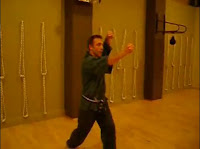Details, details...

I have a mate named Harry who will dismiss a (sometimes obviously) valid point or argument with the retort: "Details, details...". Of course he always says it with a little smile. It's a long-standing joke we have. The reason it has particular ironic resonance with us is that we are both, in our own ways, rather fond of details - particularly in debate. Some might even describe us as pedantic (although I think this description is as dismissive of the importance of "details" as Harry's joke). Details are important, particularly in the martial arts. Consider the following example: The late, great, Chinese martial arts teacher Chen Pan-Ling was given the task by the then Chinese government of collating knowledge of martial systems before their likely extinction in the face of the advance of the Japanese and later the Communists. Being one of the most respected scientists of his era (he was the leading hydraulics engineer in pre-war China) and having an ...






